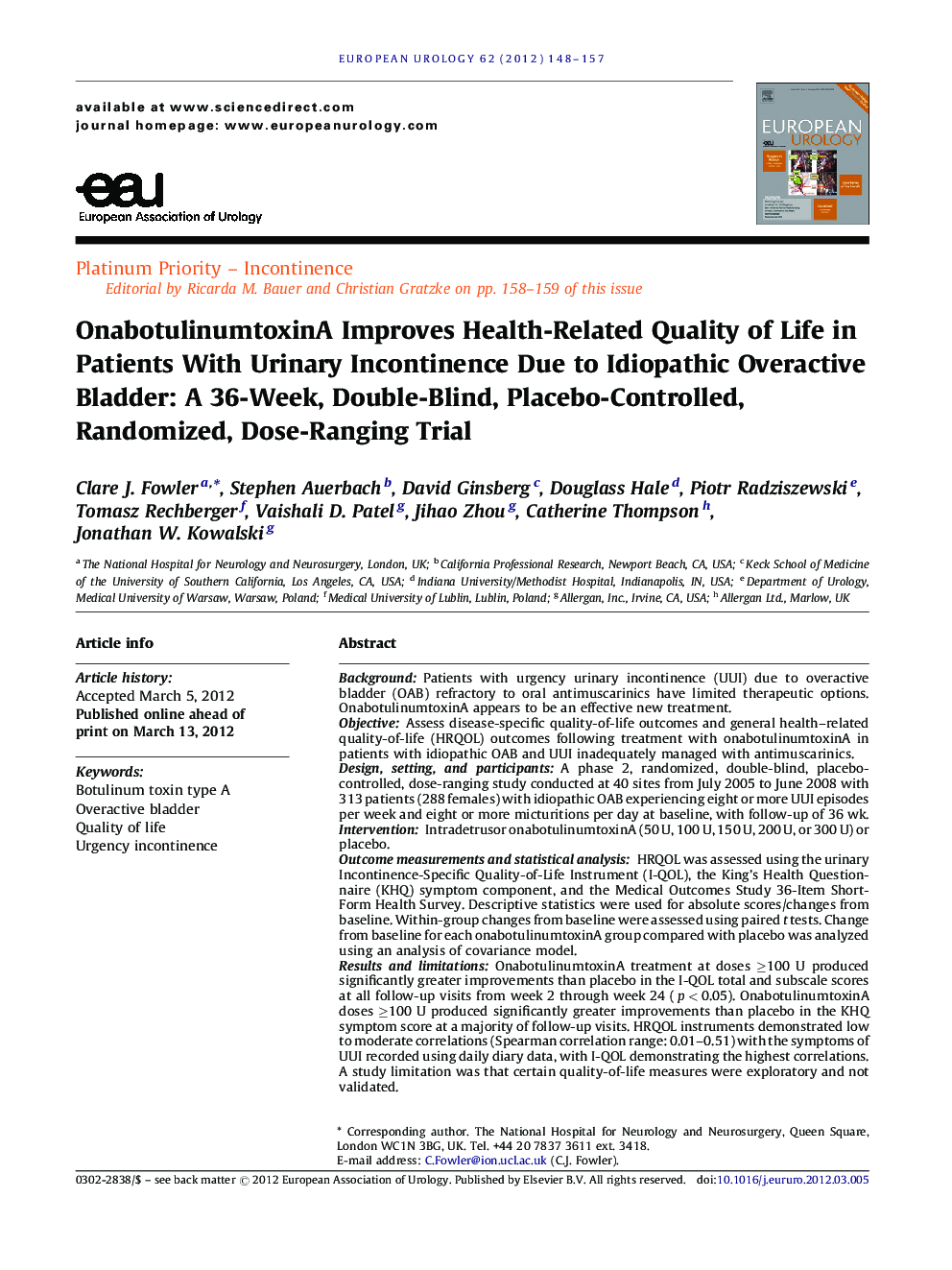| کد مقاله | کد نشریه | سال انتشار | مقاله انگلیسی | نسخه تمام متن |
|---|---|---|---|---|
| 3926688 | 1253153 | 2012 | 10 صفحه PDF | دانلود رایگان |

BackgroundPatients with urgency urinary incontinence (UUI) due to overactive bladder (OAB) refractory to oral antimuscarinics have limited therapeutic options. OnabotulinumtoxinA appears to be an effective new treatment.ObjectiveAssess disease-specific quality-of-life outcomes and general health–related quality-of-life (HRQOL) outcomes following treatment with onabotulinumtoxinA in patients with idiopathic OAB and UUI inadequately managed with antimuscarinics.Design, setting, and participantsA phase 2, randomized, double-blind, placebo-controlled, dose-ranging study conducted at 40 sites from July 2005 to June 2008 with 313 patients (288 females) with idiopathic OAB experiencing eight or more UUI episodes per week and eight or more micturitions per day at baseline, with follow-up of 36 wk.InterventionIntradetrusor onabotulinumtoxinA (50 U, 100 U, 150 U, 200 U, or 300 U) or placebo.Outcome measurements and statistical analysisHRQOL was assessed using the urinary Incontinence-Specific Quality-of-Life Instrument (I-QOL), the King's Health Questionnaire (KHQ) symptom component, and the Medical Outcomes Study 36-Item Short-Form Health Survey. Descriptive statistics were used for absolute scores/changes from baseline. Within-group changes from baseline were assessed using paired t tests. Change from baseline for each onabotulinumtoxinA group compared with placebo was analyzed using an analysis of covariance model.Results and limitationsOnabotulinumtoxinA treatment at doses ≥100 U produced significantly greater improvements than placebo in the I-QOL total and subscale scores at all follow-up visits from week 2 through week 24 (p < 0.05). OnabotulinumtoxinA doses ≥100 U produced significantly greater improvements than placebo in the KHQ symptom score at a majority of follow-up visits. HRQOL instruments demonstrated low to moderate correlations (Spearman correlation range: 0.01–0.51) with the symptoms of UUI recorded using daily diary data, with I-QOL demonstrating the highest correlations. A study limitation was that certain quality-of-life measures were exploratory and not validated.ConclusionsA single onabotulinumtoxinA treatment with doses ≥100 U resulted in statistically significant and clinically meaningful improvement in HRQOL by week 2 compared with placebo, and this improvement was sustained for ≤36 wk in patients with idiopathic OAB and UUI who were inadequately managed by oral antimuscarinics.Trial registrationClinicalTrials.gov identifier: NCT00168454.
Journal: European Urology - Volume 62, Issue 1, July 2012, Pages 148–157